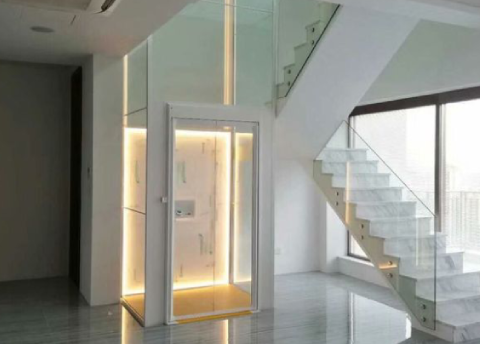As urban living spaces become more compact and multi-storied homes more common, the need for convenient and efficient vertical transportation within homes has grown. Hydraulic lifts have emerged as a popular choice for residential properties, offering a blend of functionality, safety, and aesthetic appeal.
What is a Hydraulic Lift?
A hydraulic lift operates using a fluid-driven piston mounted inside a cylinder. The motor pumps fluid into the cylinder, moving the piston and lifting the elevator cab. When descending, the fluid is released gradually, allowing for a smooth and controlled descent.
Advantages of Hydraulic Lifts
- Smooth and Quiet Operation: Hydraulic lifts are known for their smooth and quiet operation, making them ideal for residential use.
- Space Efficiency: These lifts do not require a machine room, saving valuable space within the home.
- Customizable: Hydraulic lifts can be tailored to fit various design aesthetics and spatial constraints.
- Safety: Equipped with robust safety features such as emergency lowering systems and pressure relief valves, hydraulic lifts ensure passenger safety.
- Load Capacity: They typically offer higher load capacities compared to traction lifts, making them suitable for transporting heavy loads.
Considerations Before Installation
- Structural Requirements: Ensure your home can accommodate the lift, particularly in terms of space for the shaft and pit.
- Power Supply: Hydraulic lifts require a dedicated power supply, and in some cases, backup power for emergencies.
- Maintenance: Regular maintenance is crucial to ensure the longevity and safety of the lift.
- Noise Level: While quieter than many other types, the motor and pump can still produce noise. Consider placement to minimize disturbance.
- Cost: Initial installation costs can be high, but hydraulic lifts are generally cost-effective in the long run due to their durability and low maintenance needs.
Design and Customization
Hydraulic lifts can be customized to match the interior design of your home. Options include:
- Cabin Finishes: Choose from various materials such as wood, glass, or metal.
- Lighting: LED lighting can enhance the aesthetic appeal and functionality.
- Control Panels: Modern touch-screen panels and voice-activated controls can be integrated.
- Doors: Select from a range of door styles, including sliding, swing, and glass doors.
Installation Process
- Site Assessment: A thorough evaluation of the home’s structural integrity and spatial configuration.
- Design Approval: Customizing the lift design to meet the homeowner’s preferences and needs.
- Construction Preparation: Preparing the site, including creating the shaft and pit.
- Installation: Professional installation by certified technicians.
- Testing and Certification: Ensuring the lift meets all safety standards and operates smoothly.

Prev post
Things to consider before lift installation
Next post
Types of commercial lift and their uses


